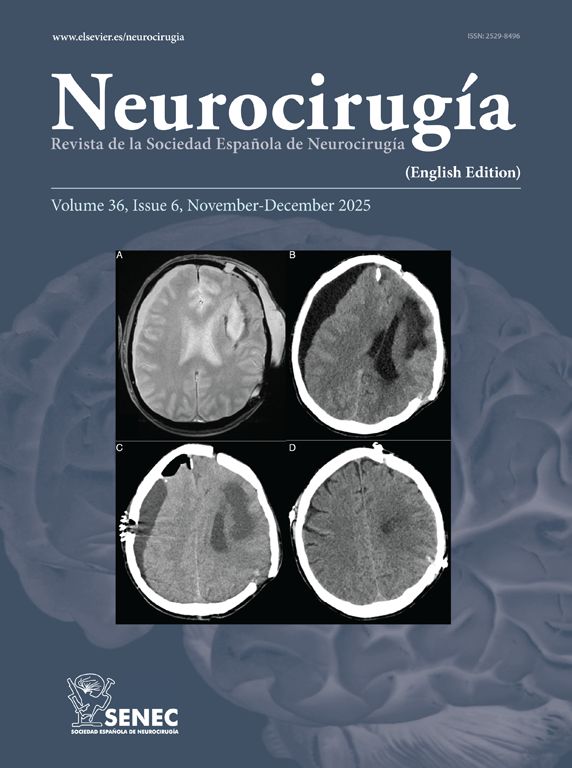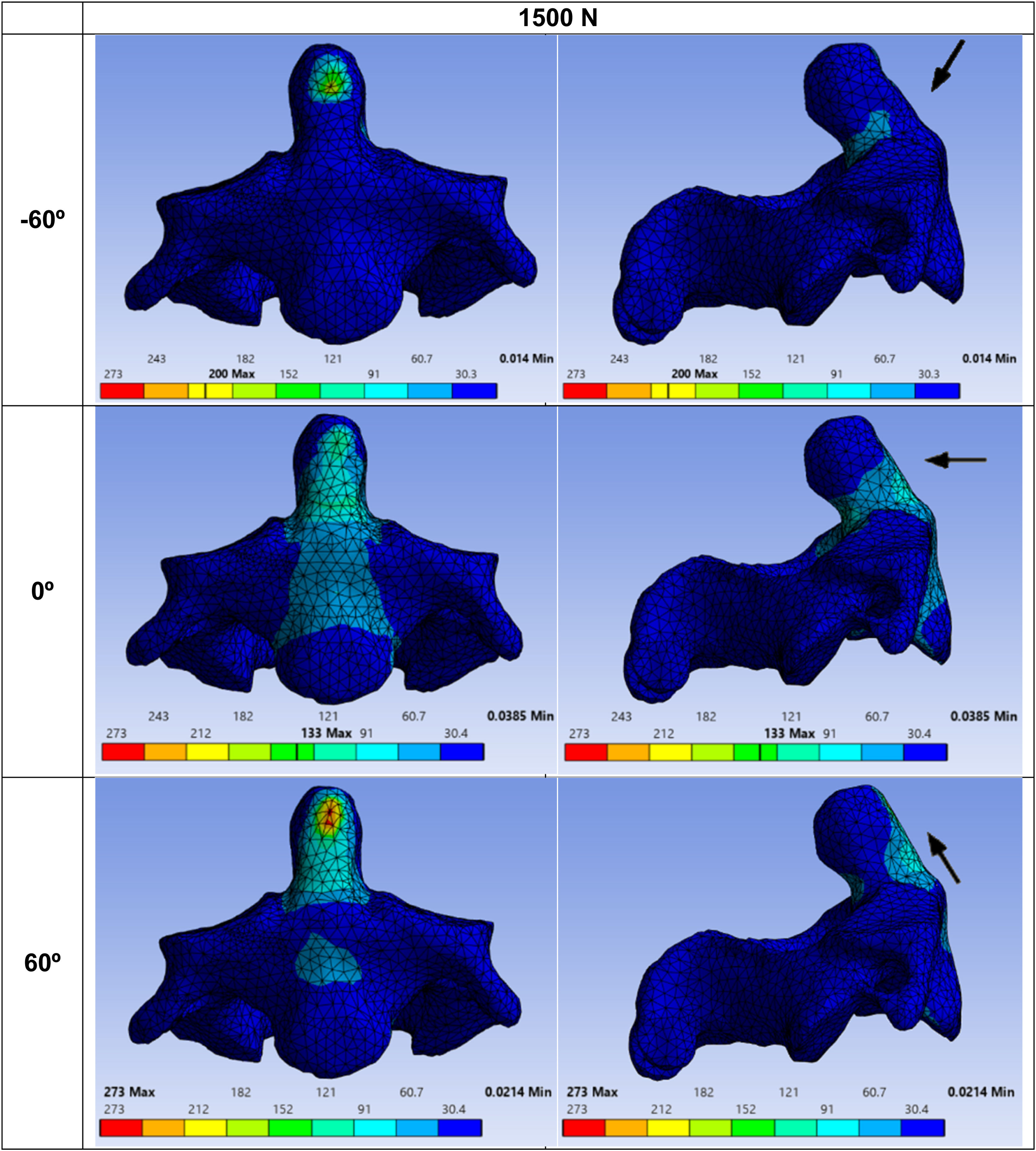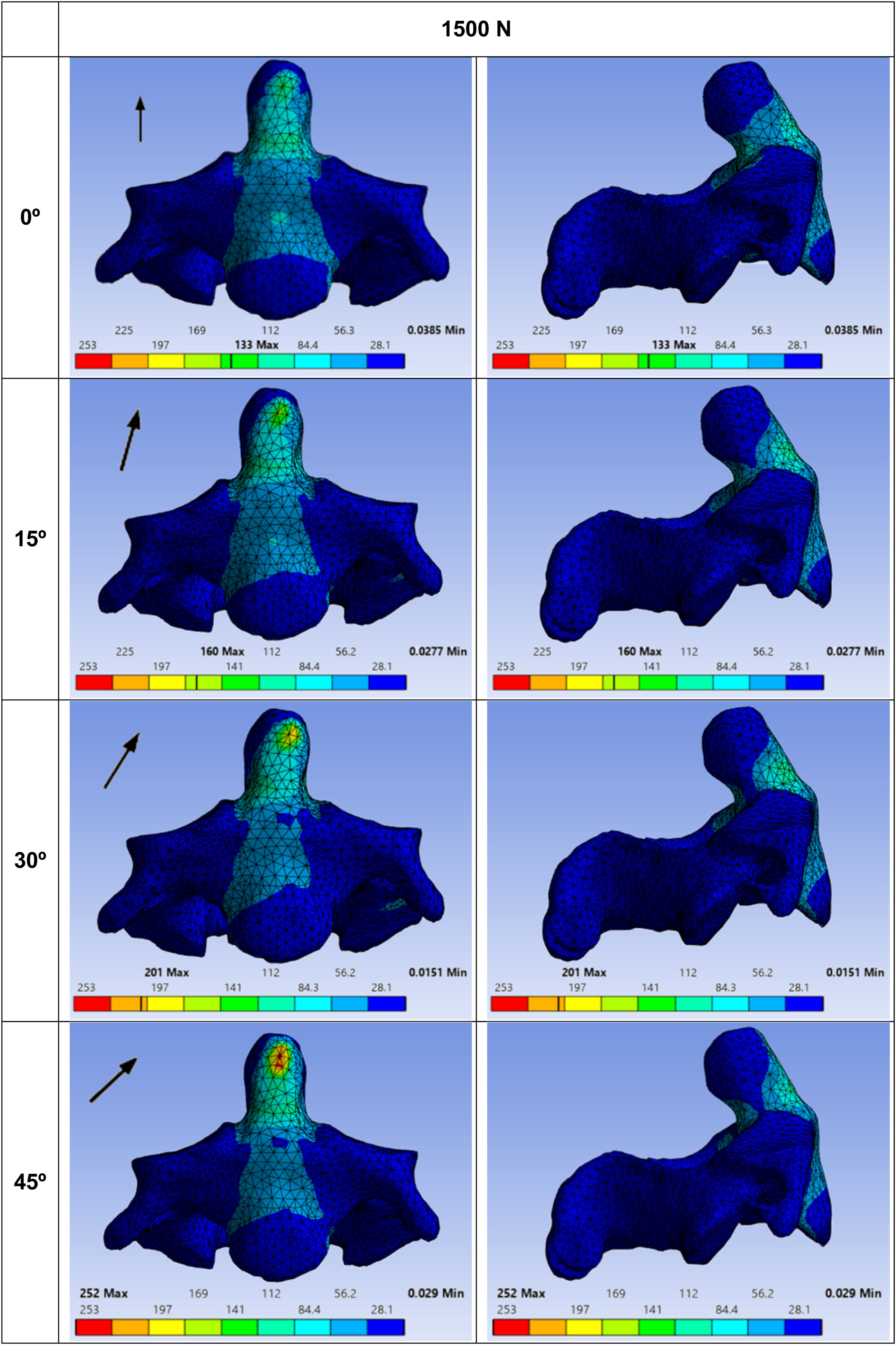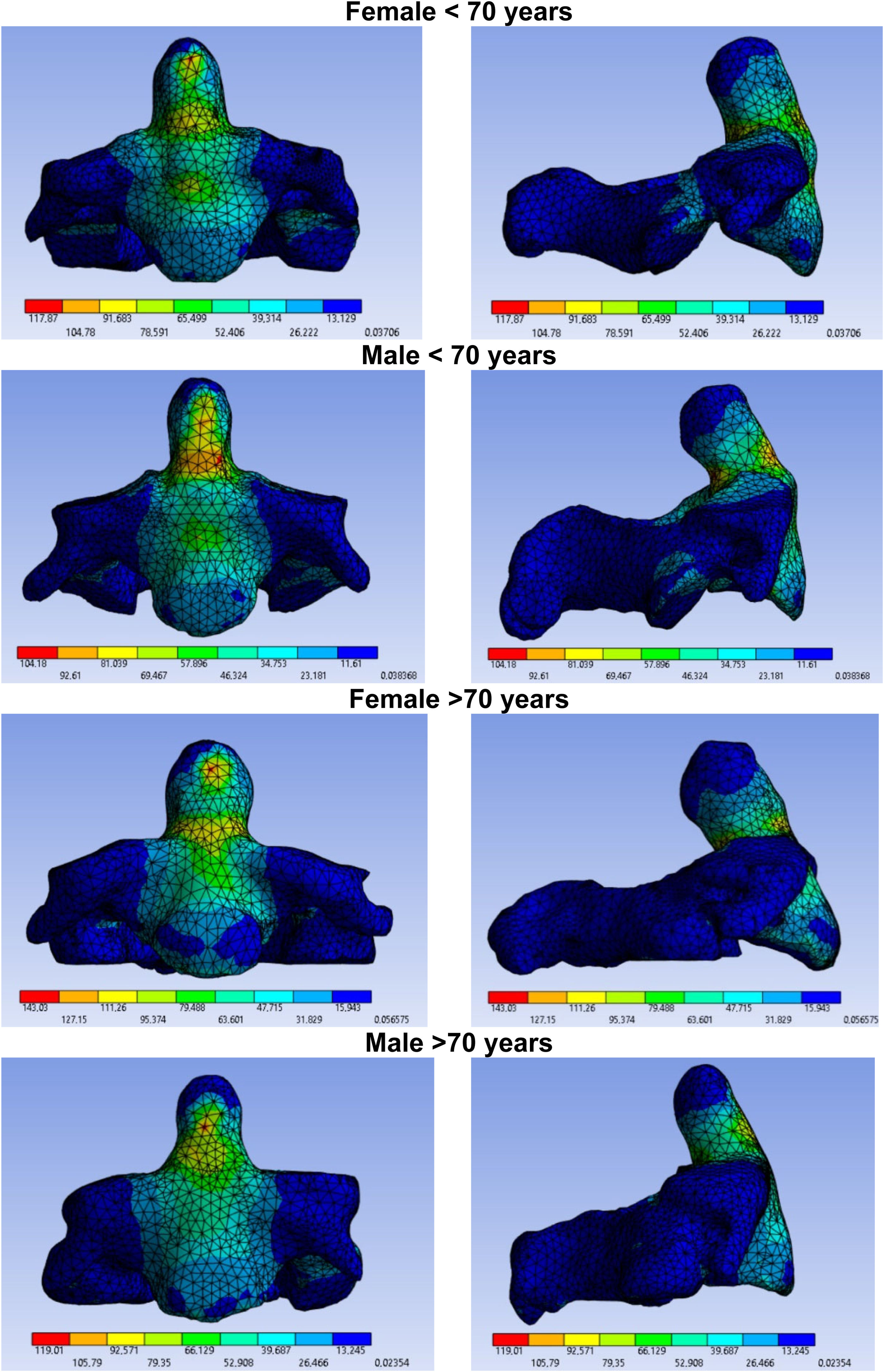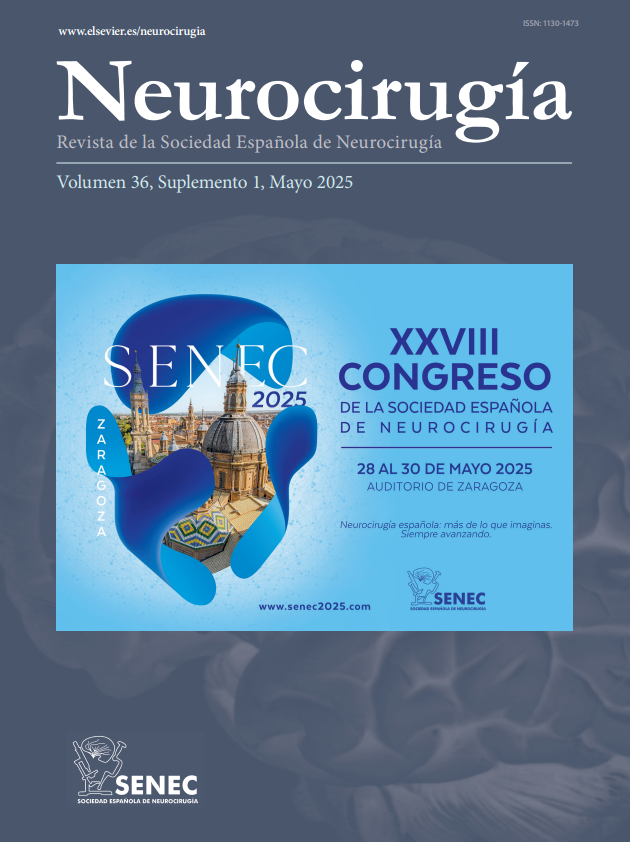Fractures of the odontoid, prevalent among the elderly but affecting diverse demographics, pose significant risks ranging from mild discomfort to severe disability or fatality. These fractures, often stemming from trauma, are particularly frequent in the cervical spine. While commonly attributed to high-impact events like traffic accidents in adults, even low-energy incidents such as falls can precipitate these fractures in the elderly.
Previous studies have explored loading conditions and treatment effects; however, a comprehensive investigation into the influence of the magnitude and direction of the force involved in the trauma, and the influence of the sex and age of the patient remains scarce so we want to delve deeper into this topic.
MethodsThis study uses a finite element (FE) model to analyze the response of 3D models of the second cervical vertebra (extracted from computed tomography images) exposed to different loads of magnitude and force. 52 patients were analyzed in this study.
The patients were divided into 4 groups: male <70, female <70, male >70, female >70) under different force conditions.
Von Mises stress values were obtained when loads of 200 N and 1500 N were applied to the anterior surface of the odontoid with different angles of incidence in the sagittal and axial plane.
ResultsOdontoid fractures in subjects over 70 years of age are more frequent in female, the maximum stresses produced in the odontoid are 181 MPa and are considerably higher compared to male, which is 131 MPa. In young subjects (<70 years), the differences between sex are less marked, 113 MPa for female and 114 MPa for male.
ConclusionsLoad direction is one of the main factors affecting odontoid fracture, especially in subjects >70 years of age; by understanding this, the mechanisms that cause different types of fractures can be understood and better strategies can be proposed to apply different treatment approaches to them, both from a medical and surgical point of view.
Las fracturas de odontoides, frecuentes entre los ancianos pero que afectan a diversos grupos demográficos, plantean riesgos significativos que van desde una leve molestia hasta una discapacidad grave o la muerte. Estas fracturas, que a menudo se derivan de un traumatismo, son particularmente frecuentes en la columna cervical. Si bien se atribuyen comúnmente a eventos de alto impacto como accidentes de tránsito en adultos, incluso incidentes de baja energía como caídas pueden precipitar estas fracturas en los ancianos.
Estudios previos han explorado las condiciones de carga y los efectos del tratamiento; sin embargo, una investigación exhaustiva sobre la influencia de la magnitud y la dirección de la fuerza involucrada en el traumatismo, y la influencia del sexo y la edad del paciente sigue siendo escasa, por lo que queremos profundizar en este tema.
MétodosEste estudio utiliza un modelo de elementos finitos (EF) para analizar la respuesta de modelos 3D de la segunda vértebra cervical (extraídos de imágenes de tomografía computarizada) expuestas a diferentes cargas de magnitud y fuerza. Se analizaron 52 pacientes en este estudio.
Los pacientes fueron divididos en 4 grupos: hombres <70, mujeres <70, hombres >70, mujeres >70) bajo diferentes condiciones de fuerza.
Se obtuvieron valores de esfuerzo de Von Mises al aplicar cargas de 200 N y 1500 N a la superficie anterior del odontoides con diferentes ángulos de incidencia en el plano sagital y axial.
ResultadosLas fracturas de odontoides en sujetos mayores de 70 años son más frecuentes en el sexo femenino, los esfuerzos máximos producidos en el odontoides son de 181 MPa y son considerablemente mayores en comparación con el masculino, que es de 131 MPa. En sujetos jóvenes (<70 años), las diferencias entre sexos son menos marcadas, 113 MPa para el sexo femenino y 114 MPa para el masculino.
ConclusionesLa dirección de la carga es uno de los principales factores que afectan a la fractura de odontoides, especialmente en sujetos >70 años; Al comprender esto, se pueden entender los mecanismos que causan los diferentes tipos de fracturas y proponer mejores estrategias para aplicarles diferentes enfoques de tratamiento, tanto desde el punto de vista médico como quirúrgico.
Article

If it is the first time you have accessed you can obtain your credentials by contacting Elsevier Spain in suscripciones@elsevier.com or by calling our Customer Service at902 88 87 40 if you are calling from Spain or at +34 932 418 800 (from 9 to 18h., GMT + 1) if you are calling outside of Spain.
If you already have your login data, please click here .
If you have forgotten your password you can you can recover it by clicking here and selecting the option ¿I have forgotten my password¿.

